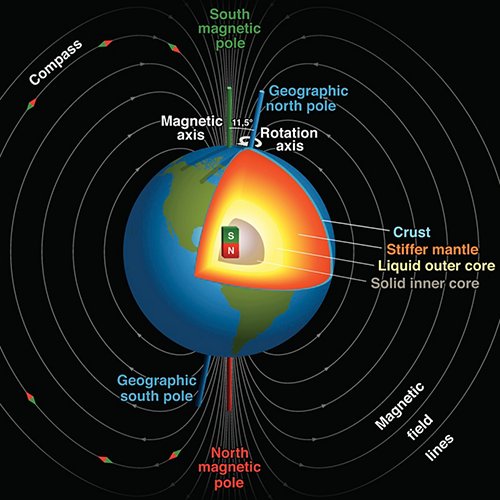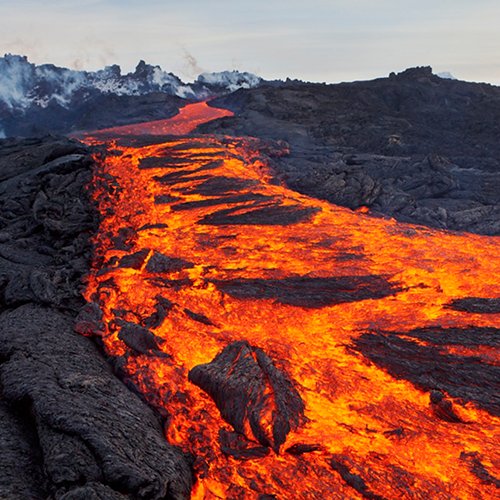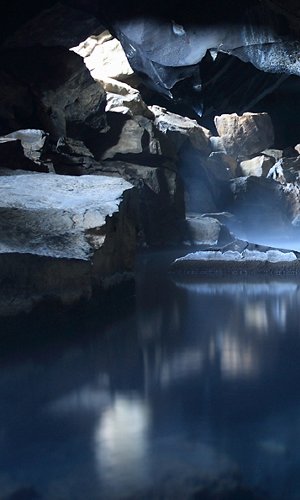Dear rock, tell me how your magnetic crystals are oriented and I’ll tell you when, under what conditions and in what part of the world you were formed. It’s not magic, but a subject known to geologists as paleomagnetism. Every rock, in fact, contains a veritable repository of information about its birth, history and evolution. But let’s try to understand in which language these databases are written and how we can translate and interpret them.
The Earth’s magnetic field
The outer core of the Earth, the one closest to the surface, more fluid, is characterised by the presence of convective currents of iron, nickel and other lighter elements. These currents generate a magnetic field – the Earth’s magnetic field – which can be considered as a dipole. Simplifying, the Earth’s magnetic field can be compared to that generated by a large magnet placed in the centre of the Earth, whose axis and – consequently – poles are in constant motion, with an inclination of about 11.5° with respect to the Earth’s axis of rotation.
The name that scientists have given to this dipole is GAD (Geocentric Axial Dipole) and conventionally its flux lines point to the North pole (see figure below). However, studying the magnetisation of the rocks that make up the ocean ridges, scientists have discovered that the Earth’s magnetic field has reversed its sign (normal polarity and reverse polarity) several times in the geologic history of the planet (with a frequency of between 0 and 4- 5 magnetic reversals every million years).






